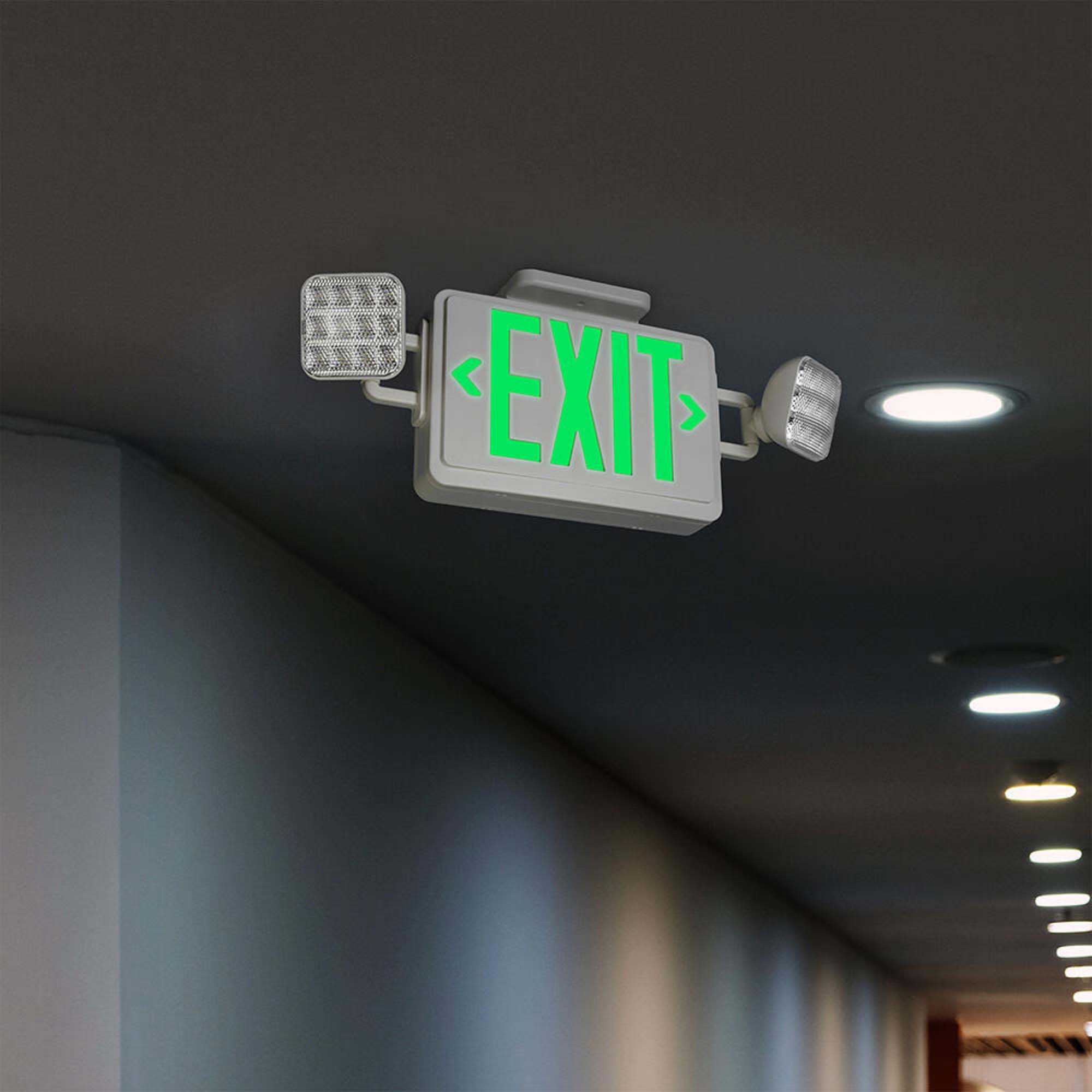Emergency Lighting Regulations

Emergency lighting in bathrooms – Emergency lighting is an essential part of any building’s safety plan. It provides illumination in the event of a power outage, allowing occupants to safely evacuate the premises. Bathrooms are no exception to this rule, and there are specific building codes and regulations that govern the installation of emergency lighting in these areas.
In general, emergency lighting in bathrooms must meet the following requirements:
- The light level must be at least 1 foot-candle (10.76 lux) at the floor level.
- The fixtures must be placed so that they illuminate all areas of the bathroom, including the toilet, sink, and shower.
- The fixtures must be clearly marked with the words “Emergency Lighting.”
In addition to these general requirements, there may be specific requirements for emergency lighting in bathrooms in certain jurisdictions. For example, some jurisdictions may require that the emergency lighting be powered by a battery backup system. It is important to check with the local building code officials to determine the specific requirements for emergency lighting in bathrooms in your area.
Bathrooms are often overlooked when it comes to emergency lighting, but it’s an important safety feature that can help you find your way out in the event of a power outage. If you’re looking for a way to add a touch of style to your bathroom, consider adding some shabby chic elements.
This style is characterized by its use of distressed furniture, vintage accessories, and soft colors. It’s a great way to create a warm and inviting space that’s also functional. And don’t forget to add some emergency lighting to keep you safe in the event of a power outage.
Fixture Placement
The placement of emergency lighting fixtures in bathrooms is critical to ensuring that all areas of the bathroom are adequately illuminated in the event of a power outage. The fixtures should be placed so that they provide a clear path of egress from the bathroom to the nearest exit.
In most cases, the best place to install emergency lighting fixtures in bathrooms is on the ceiling. This will ensure that the light is evenly distributed throughout the bathroom. However, if there are any obstructions on the ceiling, such as a skylight or a fan, the fixtures may need to be placed on the walls.
When placing emergency lighting fixtures on the walls, it is important to make sure that they are placed high enough so that they are not blocked by furniture or other objects. The fixtures should also be placed so that they do not create a glare that could make it difficult to see.
In bathrooms, emergency lighting is crucial for providing illumination during power outages. Consider complementing this safety feature with a touch of elegance by adding a bead curtain. Its shimmering strands can reflect the light, creating a soft and inviting ambiance while maintaining the functional aspect of emergency lighting.
Signage
Emergency lighting fixtures in bathrooms must be clearly marked with the words “Emergency Lighting.” This signage is important because it helps to identify the fixtures in the event of a power outage. The signage should be placed on the front of the fixtures and should be large enough to be easily seen.
In addition to the signage on the fixtures, there should also be signage at the entrance to the bathroom that indicates the location of the emergency lighting. This signage is important because it helps to direct occupants to the nearest source of light in the event of a power outage.
Design Considerations

When designing emergency lighting for bathrooms, it is essential to consider factors such as room size, fixture type, placement, power source, and backup options to ensure effective illumination during emergencies.
The room size and layout determine the number and placement of emergency lights. Larger bathrooms require more fixtures, while smaller ones may need fewer. The layout should consider potential obstacles and ensure even distribution of light.
Fixture Type and Placement
The type of fixture should complement the bathroom’s aesthetics and provide adequate illumination. Recessed or surface-mounted fixtures can be used, depending on the ceiling height and design preferences. Proper placement ensures that all areas of the bathroom are illuminated, including the shower, toilet, and vanity.
Power Source and Backup Options, Emergency lighting in bathrooms
Emergency lights should have a reliable power source. Battery-operated fixtures are common, providing backup power during power outages. Alternatively, hardwired fixtures can be connected to the building’s emergency power system. Backup options ensure that emergency lighting remains functional even when the primary power source fails.
Maintenance and Inspection: Emergency Lighting In Bathrooms

Maintaining and inspecting emergency lighting in bathrooms is crucial for ensuring proper functioning during emergencies. Regular checks and prompt actions help prevent failures, extend equipment lifespan, and enhance overall safety.
Testing and battery replacement are essential maintenance tasks. Monthly testing verifies that the lights are operational and the batteries are holding a charge. Batteries should be replaced every three to five years, or as per manufacturer’s recommendations, to prevent sudden failures.
Troubleshooting Common Problems
- Lights not turning on: Check if the circuit breaker or fuse is tripped, or if the battery is dead. Replace the battery if necessary.
- Lights flickering: This may indicate a loose connection or a failing battery. Tighten any loose connections and replace the battery if needed.
- Lights staying on: This could be due to a faulty sensor or a problem with the wiring. Contact a qualified electrician for inspection.